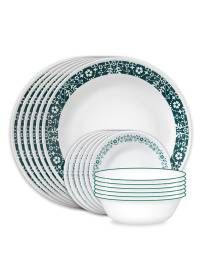The coolest in ice baths and plunge pools

The popularity of ice baths is something Matt Leacy, creative director and founder of the award winning Landart, has embraced – both personally and professionally.
"Ice baths continue to grow in popularity, and I'm now getting regular requests to include them in designs. Whether it's in permanent form, or something that can be used more in an ad hoc occasional way. From a personal perspective I'm a big fan of ice baths. My wife, kids and I are active, and ice baths are a great way of helping bodies recover from exercise…so they say. However, I find them really useful for lifting my mood, it is impossible to not be in a better mood after an ice bath. If I've had a heavy workout, or we've gone on a big hike or bike ride there's no better way of healing tired muscles than an ice bath. You feel invigorated afterwards and I find they also help with sleep – so I understand why clients are starting to work them into wish lists for their properties," said Matt Leacy.
According to Matt the key considerations when thinking about adding an ice bath to your outdoor space are:
Integrate or hide the tub in your outdoor setting - by their nature many ice baths aren't aesthetically pleasing, especially if your purchasing at the lower end of the price range. Many have quite a boxy refrigerator look to them – and there's not much of a range of colours. For this reason they're not something you'd necessarily make a feature in a garden – unless they're part of a dedicated gym zone that's screened off from view. One option is to look at ways they can be built in and then easily accessed for use as needed. For instance, incorporate an ice bath into under seat storage. You can keep pool gear or kids toys in a lift out plastic tub inside the hidden ice bath and lift everything out to use. This way in between use the space is still being utilised in a useful way to keep your outdoor space looking good. Ice baths whether permanent or temporary need draining so this is something you need to consider when positioning one.
Size – how you'd like to use your ice bath, the space you have to set it up, your size and whether you'll share it with other family or friends, will determine what size you opt for. You can also look at using your plunge pool as an ice bath, but given the volume of ice needed this wouldn't be a practical solution for just one person or if you're having an ice bath regularly. If you're not convinced how much you'd use an ice bath perhaps start off using your bathroom tub for ice baths, or buying a temporary ice bath online and build up to creating something outdoors and more permanent. As with showers though you can't beat using an ice bath outdoors for a lovely immersive experience, especially if you've already been outdoors exercising.
Placement of your ice bath – as the saying goes, location is everything. If you're going for a more permanent placement of an ice bath you need to consider where you'd like to sit in it to take in views or a nice outlook into your garden or alternatively a tub that can be bought in or out of storage might be the best option so you're not giving up the best real estate in your garden to an ice tub. And given that you won't be luxuriating in it for hours on end.
Add some wow factor – as ice baths continue rising in popularity we're seeing more luxe, better designed options becoming available. There's some that are stainless steel and timber lined or made from other stylish materials to better blend into a garden settings. And for the truly committed regular user there are some that are temperature controlled so they're always ready for use and have a filtration system and plumbed in draining when required. It all comes down to cost – to get this sort of ice bath you would need to set aside a decent budget.
"I'm currently debating how I'll set up an ice bath at my new home build and am looking at more permanent ways to do it given we like to use them regularly," said Matt.
On the plunge pool front Matt Leacy says they continue to be a popular option.
"If space is limited in your outdoor areas it's a no brainer. A plunge pool in a tight space still gives you somewhere to cool off in summer, and it's an option that's easier to regulate temperatures on and keep sparkling clean. They also come in a variety of shape options and can be very social – it's easier to sit around in a plunge pool enjoying a drink and talking with family and friends. And plunge pools are also great for people for don't have the time to maintain a bigger pool, or even retirees who have downsized and are travelling for a big part of the year but would still like the convenience of having their own backyard pool," said Matt.
"Expense is also a contributor to some people's decision to go with a plunge pool. Obviously in most instances the smaller the pool the smaller the price tag, and ongoing maintenance and chemicals needed, heating and other requirements are all reduced with a plunge pool."
The top considerations when looking at installing a plunge pool are:
Balance in your garden design – you need to be sure your plunge pool doesn't look too small or out of proportion in the design of your outdoor space. I have seen spaces where people haven't consulted a design expert or looked at the overall design of their garden and as a result the plunge pool looks like a bit of a weird little spa stuck in the ground. You really need to integrate a plunge pool into the surrounds so it works within your outdoor space.
Colour and shape – as with anything in your garden the finishes and colour tiles, pavers or surrounding decking you opt for should all integrate with the rest of your house and outdoor space. While Mediterranean influences are very on trend this year you shouldn't just dive into adopting an on-trend look if it doesn't marry well with your property architecture and colouring. Likewise with shape – if your garden is very symmetrical and outdoor spaces are very angular going with a square or rectangle shape is more likely to suit the space than a curved plunge pool. Although some of the round plunge pools – because of their size – do work well in an otherwise boxy design.
Location – how you'd like to use your plunge pool and the time of day you're most likely to use it should impact where you place your plunge pool, as well of course the design aesthetic.
If you'd like to be able to keep an eye on kids while they're in the pool, or to use the pool as you're socialising, your plunge pool will need to be in a central location. If however it's for more private use the beauty of a plunge pool is that you can tuck it away into spaces you may not otherwise be able to utilise for a pool – and you can also better place a plunge pool to take advantage or sun or shade depending on what your preference is.
It's also more likely that you can screen or ensure a plunge pool is in a spot that has privacy from neighbours than a bigger pool.
Adding depth and functionality – just because your pool is small doesn't mean it can't be used to exercise and tick a lot of the boxes of a bigger pool. If you go deeper things like water running are possible even in a plunge, and there are great jets that can be added to plunge pools to allow stationary swimming despite the small size. Deeper will also make the pool look bigger than it is.
Backyard access – plunge pools are often the ideal choice for a backyard that doesn't have great access. Even if you're craning in it's obviously easier to do this with a reduced size – and in most instances a plunge pool will fit down the side of properties much easier than a full size pool will. The size of the hole that needs to be dug and therefore the equipment needed to do it is another bonus when looking at accessibility and a plunge pool.
MORE



